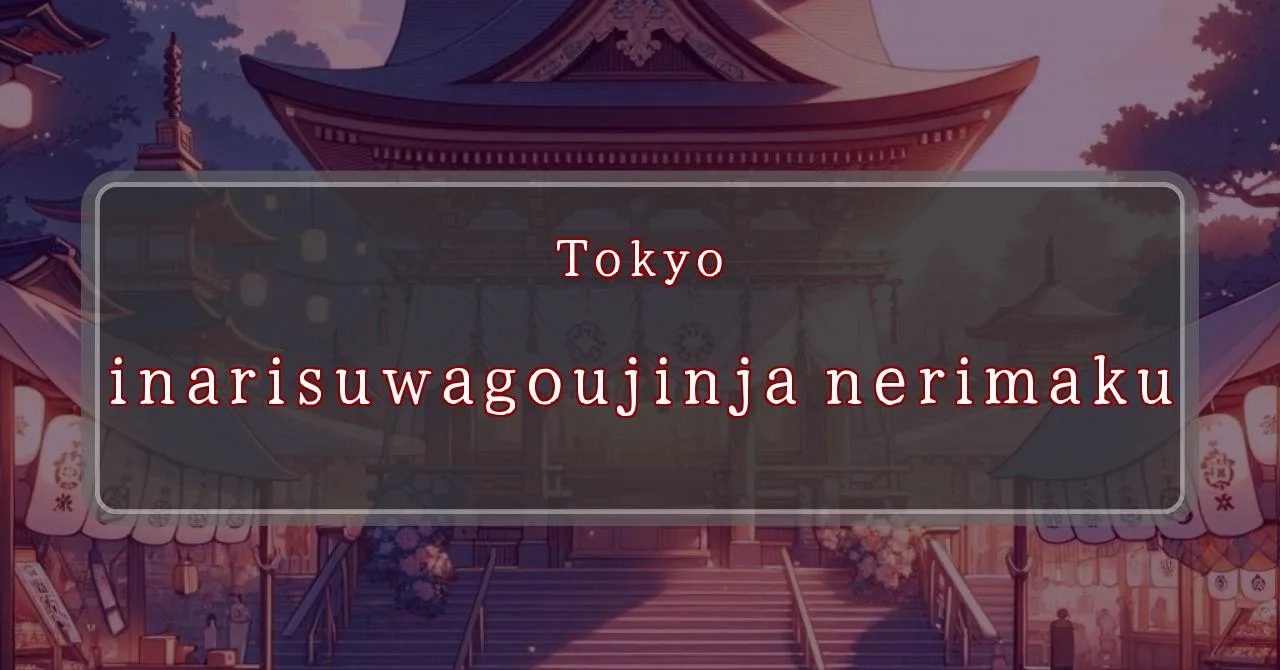Gleaming lights, Asahikawa winter nights
Basic Information
Inari Suwa Shrine is a Shinto shrine located in Nerima Ward, Tokyo, Japan.
- Address: 5-23-2 Kami Shakujii-cho, Nerima-ku, Tokyo 177-0042
- Phone Number: 03-3996-7161
- Access: 6 minutes on foot from Kami Shakujii Station on the Seibu Shinjuku Line
- Festival Days: December 22nd (Winter Solstice), 2024
Main Events and Attractions of the Festival
The Inari Suwa Shrine Festival is an annual event that takes place on December 22nd, the winter solstice. The festival features a variety of events and attractions, including:
Mikoshi Procession
A mikoshi is a portable Shinto shrine that is carried through the streets during festivals. The Inari Suwa Shrine mikoshi is a large and elaborate structure that is carried by a team of people. The procession is a lively and colorful event that draws many spectators.
Kagura Performance
Kagura is a traditional Japanese dance and music performance that is often performed at Shinto shrines. The kagura performance at the Inari Suwa Shrine Festival is a beautiful and graceful display of Japanese culture.
Food Stalls
A variety of food stalls are set up at the festival, selling a variety of Japanese dishes and snacks. Visitors can enjoy traditional festival foods such as takoyaki, yakisoba, and cotton candy.
Games and Activities
There are also a variety of games and activities for children at the festival, such as face painting, balloon animals, and ring toss. The festival is a great opportunity for families to spend time together and enjoy the holiday season.
Blessings and Deities
Inari Suwa Shrine is dedicated to the following deities:
- Inari Okami: The deity of rice, sake, tea, and general prosperity
- Omiyanome no Mikoto: The wife of Inari Okami and the deity of food and clothing
- Sarutahiko Okami: The deity of roads and travel
Visitors to the shrine pray for good luck in business, bountiful harvests, and safe travels.
Origin and History
The origins of Inari Suwa Shrine are unknown, but it is believed to have been founded during the Kamakura period (1185-1333). The shrine was originally dedicated to the god Susanoo-no-Mikoto, but it was later merged with Inari Shrine, which was dedicated to the god Inari Okami. The shrine was rebuilt in its current location in 1624.
Tips and Notes for Visitors
- The shrine is open daily from 9:00 AM to 5:00 PM.
- Admission is free.
- The shrine is a popular spot for weddings and other ceremonies.
- There is a small parking lot available for visitors.
Parking Information
There is a small parking lot available for visitors to Inari Suwa Shrine. The parking lot is located behind the shrine, and it can accommodate up to 10 cars. Parking is free of charge.
Popular Stalls and Food Carts in Recent Years
| Type of Stall | Description |
|---|---|
| Takoyaki | A staple at Japanese festivals. Characterized by a crispy outside and a creamy inside. |
| Jaga Butter | A simple yet popular snack of hot potatoes lavishly topped with melted butter. |
| Baby Castella | Small castella cakes, sweet and fluffy treats enjoyed by children and adults alike. |
| Grilled Ayu with Salt | Fresh ayu fish grilled whole with salt, a savory taste of Japanese summer. |
| Shaapin | A unique gourmet item influenced by foreign cuisine, with a chewy skin wrapping the filling. |
| Okonomiyaki | A Japanese grilled dish where you often choose your own ingredients for a personalized flavor. |
| Cotton Candy | A fluffy, sweet snack that’s extremely popular with children. |
| Chocolate Banana | A banana coated in chocolate, a fun and visually appealing dessert. |
| Kushiyaki | Various types of ingredients skewered and grilled, an easy-to-enjoy snack. |
| Yakisoba | Fried noodles mixed with a special sauce, a fast food favorite in Japan. |



